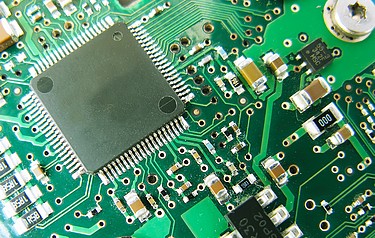The Internet of Things (IoT) adds new sensing and communications to improve the functionality of all manner of things in the world, leading towards broader connectivity, and huge amounts of data generated and exchanged.
Materials intended for ubiquitous IoT applications will have to be extremely small and low-cost. Extremely thin layers of adhesives will have to be consistent thickness and void free. The problems with reliable processing are discussed in the IDTechEx Research report Electrically Conductive Adhesives 2016-2026.
 “IoT devices” will cover a wide variety of solutions for different market-segments such as industrial vs. retail vs. consumer. Generality generally leads to sub-optimality, so a single device usually fails to meet the needs and expectations of many. Devices that are optimized for more specific use cases are usually more successful. “Things” are becoming use-case or application-centric as they apply to specific sub-segments such as connected home, automotive, medical and security. Each of these segments has their own requirements for safety, vibration, shock, temperature resistance and reliability.
“IoT devices” will cover a wide variety of solutions for different market-segments such as industrial vs. retail vs. consumer. Generality generally leads to sub-optimality, so a single device usually fails to meet the needs and expectations of many. Devices that are optimized for more specific use cases are usually more successful. “Things” are becoming use-case or application-centric as they apply to specific sub-segments such as connected home, automotive, medical and security. Each of these segments has their own requirements for safety, vibration, shock, temperature resistance and reliability.
However, most devices are likely to use similar underlying technologies. Vendors are differentiating at the user-interface design and form-factor levels while the component technologies and capabilities are fairly common. Different form factors, especially requiring flexibility or stretchability, require different materials.
Product life-cycles will be different for different market-segments, such as 1-3 years for consumer but 5-10 years for industrial. The product design cycle in consumer electronics is much faster than in enterprise computing. Today’s smart phones are redesigned every year. Short cycles are linked to fashion trends and rapid obsolescence. It is likely that smart clothing or smart eyewear will be similar. The consumer electronics industry is typically conservative about new materials, and tends to favour materials which have been developed and tested in other industries. It produces in high volumes at low costs.
However, this will vary by the type of “Thing”. Smart refrigerators will be expected to last several years, and the technology will not change as rapidly. Consumer home use has longer cycles closer to industrial market requirements. Lifecycle norms will hold true for IoT devices.
As the price of these “Things” comes down over time, and smart disposables become a possibility, we can expect even larger volume and lower cost products.
For infrastructure monitoring, 10-20 year reliability will be essential for the value proposition of having many nodes and collecting the data without maintaining them. The materials will need to withstand long lifetimes without degradation, warping or corrosion. Many bridges and pipelines are in environments with large temperature cycles or high humidity.
It is the investment needed up front to create an infrastructure for the hardware foundation of the IoT that will lead to big data and ultimately value creation. However, this capital expenditure is off-putting to businesses, and especially to consumers, so ultimately the vendors will be keen to keep the node cost as low as possible.
For more information on the IDTechEx Research report see www.IDTechEx.com/eca.